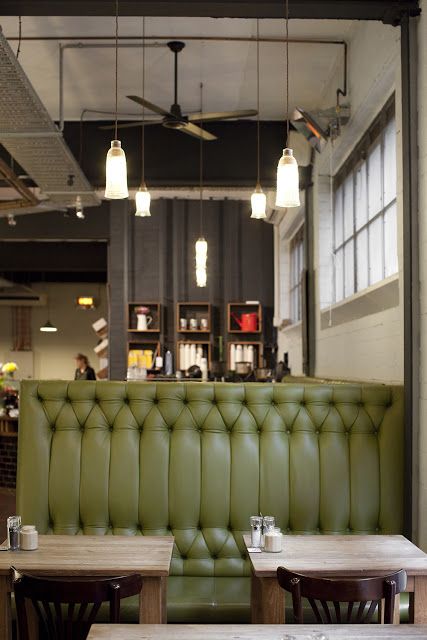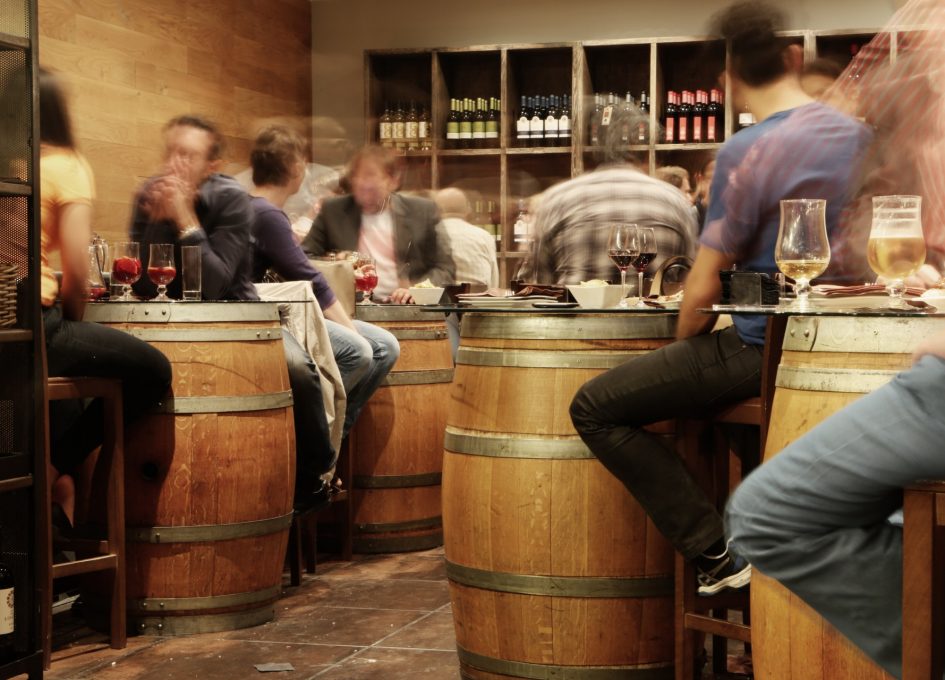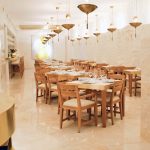The fundamental thing that makes many restaurants so noisy also happens to be the same thing they totally depend on: being full of customers. Its therefore unsurprising that noise levels are not considered to be a high priority by many business owners. However, when it comes to long-term viability, restaurants need to find ways to make sure their customers keep coming back.
There are the obvious key elements – good food, prices and service – but for many people, the environment they eat in may be just as important when it comes to gaining (or losing) their loyalty. Getting the acoustics right to achieve a lively, yet conversation-friendly ambience is a big part of this. The purpose of this piece is to show that busy restaurants don’t need to be excessively noisy, and that there are various practical steps that can be taken to this end.
One thing that heavily influences ambient noise levels is the materials the ceiling, walls and floor are made from or covered with. As the sound from peoples’ conversations spreads through the space and hits these surfaces it is either reflected back or absorbed.
Most of the building materials typically used to fit-out restaurants (plaster, brick, metal, ceramic tiling etc.) are acoustically reflective. This causes sounds to ricochet around the room multiple times, and has an amplifying effect. Soft furnishings, such as carpets and drapes can be effective at absorbing sound and reducing noise levels but are increasingly uncommon in restaurants.
In the past, it has seemed as if many dedicated acoustic absorption products were designed without any consideration for interior design aesthetics. Fortunately, this is no longer the case – a huge variety of tones, textures and finishes are available to complement all manner of design styles.
For example, special acoustic plaster systems have been developed which look just like conventional plaster but are effective at absorbing sound, allowing designers to maintain an uncluttered, minimalist look.
Conversely, perforated sheet metal is an interesting option for establishments seeking an industrial aesthetic. When paired with an acoustic backing material, this becomes a highly efficient sound absorber.
Slatted or perforated timber panelling is sometimes used to complement a Scandinavian style interior design. Contrary to popular belief, it’s not wood itself that absorbs the sound, but the gaps between the battens / planks, and the acoustic backing material.
There are all manner of different types of wall-mounted acoustic panels that are suitable as retrofit solutions. For the ultimate in terms of customisation, acoustic panels can be printed with photographic images, to combine visual art with noise reduction.
While the ambient noise level is partly determined by the total number of people packed into a restaurant, the way in which they are distributed is equally important. The greater the distance between individuals within the same group, the louder they need to speak, and the higher the ambient noise level becomes. This is why restaurants full of couples sat on small intimate tables are generally quieter than those with big groups sat around large tables.
There are a few ways in which the noise from large groups can be managed.
The liberal application of sound absorbing materials to the ceiling directly above, and the nearest walls can reduce the noise at its source.
Cleverly designed furniture can be effective at preventing noise from spreading from one area to another, such as high-backed, booth-style seating, or free-standing shelving units. Even just increasing the physical separation between large groups and other tables can make a difference.


The one factor that can be very easily controlled by a restaurant’s management is the background volume setting. By masking other peoples’ conversations, background music can help to provide a degree of privacy and allow people to feel that they can speak normally without every word being overheard. However, it is common for the music to be cranked up to such an extent that people within the same group have to raise their voice to be heard.
For some, this is all part of a vibrant, buzzing atmosphere, whereas for many others such sound levels make conversation an impossibility. Given the wide range of peoples’ responses to ambient noise levels, it can be difficult to judge what an appropriate music level is. However, at the very least, restaurants should be responsive to requests to turn the level down a few notches.
It does seem like the issue of noise levels in restaurants is beginning to be taken more seriously, with an increasing number of restaurant fit-outs including measures to address the problem. There is a very long way to go, but each of these establishments is helping to make the case that good acoustics in restaurants is not only desirable, but also entirely possible.














